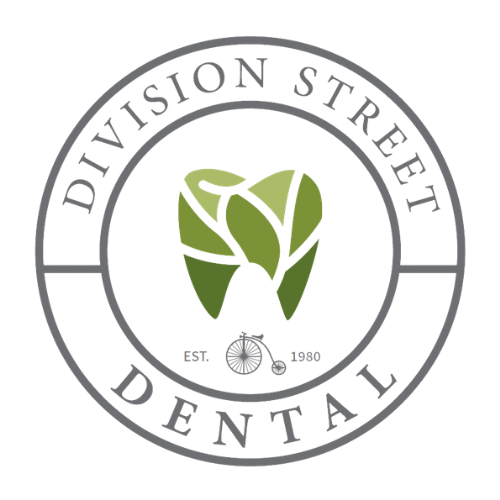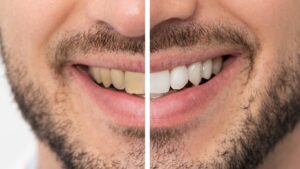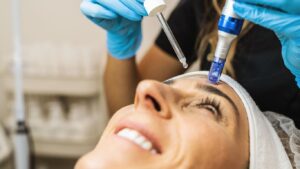Orofacial Myofunctional Therapy Exercises for Adults to Unlock Better Sleep in Portland
Sleep apnea is a serious sleep disorder characterized by pauses in breathing and reduced airflow during sleep. These disruptions prevent individuals from entering the deep, restorative stages of sleep and can lead to fatigue, headaches, impaired concentration, and increased risk of cardiovascular disease, stroke, and other health problems.
At Division Street Dental in Portland, Oregon, we emphasize holistic dental care that focuses on the overall well-being of our patients. One of the innovative treatments gaining prominence in addressing sleep apnea in Portland is the practice of orofacial myofunctional therapy exercises.
This article sheds light on how these targeted exercises can benefit those suffering from obstructive sleep apnea and related disorders.
Understanding Myofunctional Therapy Exercises
Myofunctional therapy focuses on exercises that strengthen the muscles of the face and tongue that control swallowing and breathing. The goal is to promote proper tongue position and function of the lips, cheeks, and tongue.

The soft palate is the flexible tissue at the back of the roof of the mouth. During sleep, the soft palate can relax and vibrate, causing snoring. Weak tongue muscles can also contribute to obstructed breathing and snoring. By performing targeted exercises to strengthen the tongue and facial muscles, myofunctional therapy aims to open the airway and promote proper breathing during sleep.
Some key principles of myofunctional therapy exercises include:
- Strengthening the tongue so it rests in the proper position against the roof of the mouth
- Training the lips to close and the tongue to lift while swallowing
- Coordinating breathing through the nose instead of the mouth
- Stretching facial and oral muscles
- Reducing muscle tension in the face, neck, and throat
With regular practice of these targeted exercises, myofunctional therapy retrains the muscles to promote proper tongue position, nasal breathing, swallowing patterns, and facial muscle tone. This can help open the airway, reduce snoring, and address the root causes of sleep-disordered breathing.
The Role of the Tongue in Obstructive Sleep Apnea
The tongue plays a critical role in the development and treatment of obstructive sleep apnea. During sleep, the tongue can fall back into the airway, leading to obstruction and impaired breathing. Ensuring proper tongue positioning is vital for maintaining an open airway.
Tongue Positioning and Airway Patency
According to sleep medicine experts, placing the tip of the tongue against the roof of the mouth is of paramount importance. This positioning helps keep the airway clear and open. However, for those with snoring and sleep apnea, the tongue might collapse into the throat, causing airflow obstruction, loud snoring, and frequent awakenings.
Myofunctional Therapy: A Focus on the Tongue
Myofunctional therapy extensively utilizes tongue exercises and oral motor techniques. The aim is to strengthen the tongue, ensure its correct positioning, and subsequently maintain an open airway.
The Way Forward in Sleep Apnea Treatment
Correct tongue positioning during sleep is crucial for effectively treating obstructive sleep apnea with myofunctional therapy exercises. It’s essential to emphasize tongue strength, endurance, and its proper placement against the roof of the mouth. Through consistent tongue exercises and oral motor training, one can achieve significant improvements in sleep-related breathing disorders.
5 Effective Myofunctional Therapy Exercises for Sleep Apnea
Tongue Slide
This exercise for sleep apnea helps strengthen the tongue. Start with your tongue tip on the “tip of your nose.” Slowly slide your tongue forward until you reach the “bottom of your chin.” Perform this slide 10 times.
Tongue Tip Touch
Place your tongue tip on the inside of your top front teeth. Then, move your tongue tip back and up to touch the bumpy area behind your front teeth. Return your tongue tip to the starting position. Repeat this exercise by touching 10 different spots on the roof of your mouth.
Tongue Roof Push
Start with your tongue tip on the “roof of your mouth” behind your top front teeth. Apply light pressure as you push your tongue tip against the roof of your mouth. Hold for 5 seconds. Repeat 10 times.
Tongue Rolling
Curl your tongue’s sides upward to form a “taco shell” shape. Slowly roll your tongue forward and backward 10 times while maintaining this shape.
Tongue Extension
Open your mouth and stick your tongue out as far as possible, pointing toward your chin. Hold for 5 seconds. Bring your tongue back in and repeat 10 times.
Practicing these exercises for a few minutes daily can help strengthen your tongue and soft palate muscles over time. Consult your myofunctional therapist to develop a customized exercise plan.
The Role of Facial Muscles in Myofunctional Therapy
Facial muscle exercises are an important component of myofunctional therapy for sleep apnea. The muscles in the face and throat play a key role in keeping the airway open and unobstructed. Strengthening the facial muscles can provide multiple benefits for sleep apnea patients:
- Stronger facial muscles can help keep the airway open. Exercises that target muscles like the orbicularis oris muscle around the mouth and lips, as well as the masseter muscle used for chewing, can improve muscle tone. This helps stabilize the airway during sleep.
- Exercises to activate the facial and throat muscles may reduce snoring. Snoring often occurs when throat muscles are weak and airway tissues vibrate as air flows through. Improving muscle tone can minimize this vibration.
- Coordinating facial muscle movements may also decrease apnea events. Being able to activate multiple muscles simultaneously can help maintain airway patency.
- Exercise can enhance the tone of facial structures like the soft palate. A firmer soft palate is less likely to collapse into the airway.
- Swallowing exercises activate key muscles. This helps in managing saliva and preventing airway closure.
Overall, incorporating facial muscle strengthening helps address sleep apnea using a holistic approach. At Division Street Dental in Portland, Oregon, we develop customized treatment plans that include these myofunctional therapy exercises alongside other evidence-based modalities to provide comprehensive care.
Myofunctional Therapies Exercises FAQs
What is the basic myofunctional therapy?
Myofunctional therapy involves exercises to correct facial and tongue muscle function, addressing issues like tongue thrust and improper bite. It strengthens muscles for better breathing, chewing, and swallowing, tailored to individual needs for holistic oral health improvement.
How long does it take to see results from myofunctional therapy?
Results from myofunctional therapy vary, typically appearing within weeks to months. Effectiveness depends on individual conditions and commitment to prescribed exercises. Regular therapist assessments are crucial for tracking progress and adjusting therapy plans.
How can the tip of your tongue affect sleep apnea symptoms?
The position of the “tip of your tongue” can play a significant role in airway patency. When positioned against the roof of the mouth, it helps ensure an open airway, reducing risks associated with obstructive sleep apnea.
Why is the tongue’s position against the roof of your mouth important?
Keeping the tongue against the “roof of your mouth” ensures the airway remains unobstructed. This promotes better airflow and reduces snoring and sleep apnea symptoms.
How often should one practice these therapy exercises?
While frequency might vary based on individual needs, most exercises are recommended to be “repeated 10 times” daily for effective results.
How do you do tongue exercises to reduce mouth breathing?
Tongue exercises for reducing mouth breathing include pressing and sliding the tongue against the roof of the mouth and creating suction to hold it in place. Performed several times daily under a therapist’s guidance, these exercises strengthen and reposition the tongue.
What is oral myofunctional therapy for adults?
Oral myofunctional therapy for adults corrects dysfunctional facial and tongue muscle patterns affecting oral functions. It addresses issues like improper swallowing and breathing difficulties, improving muscle function, and overall oral health. Therapy is beneficial for habit-related, structural, or neurological conditions.
Are there other holistic treatments for sleep apnea at Division Street Dental?
At Division Street Dental, we believe in a holistic approach. While myofunctional therapy exercises are crucial, we offer various treatments tailored to each patient’s needs to ensure comprehensive care.
Summary
Obstructive sleep apnea disrupts breathing during sleep and can lead to severe health issues if ignored. While CPAP machines are commonly recommended, they’re not suitable for everyone. Myofunctional therapy offers an alternative, focusing on strengthening the tongue and facial muscles through specific exercises like the tongue slide and tongue push.
When practiced diligently, these exercises can promote an open airway during sleep. Research indicates improved symptoms in patients who incorporate myofunctional therapy. This holistic method, combined with lifestyle adjustments, offers potential relief for sleep apnea sufferers, enabling them to proactively manage their condition.



